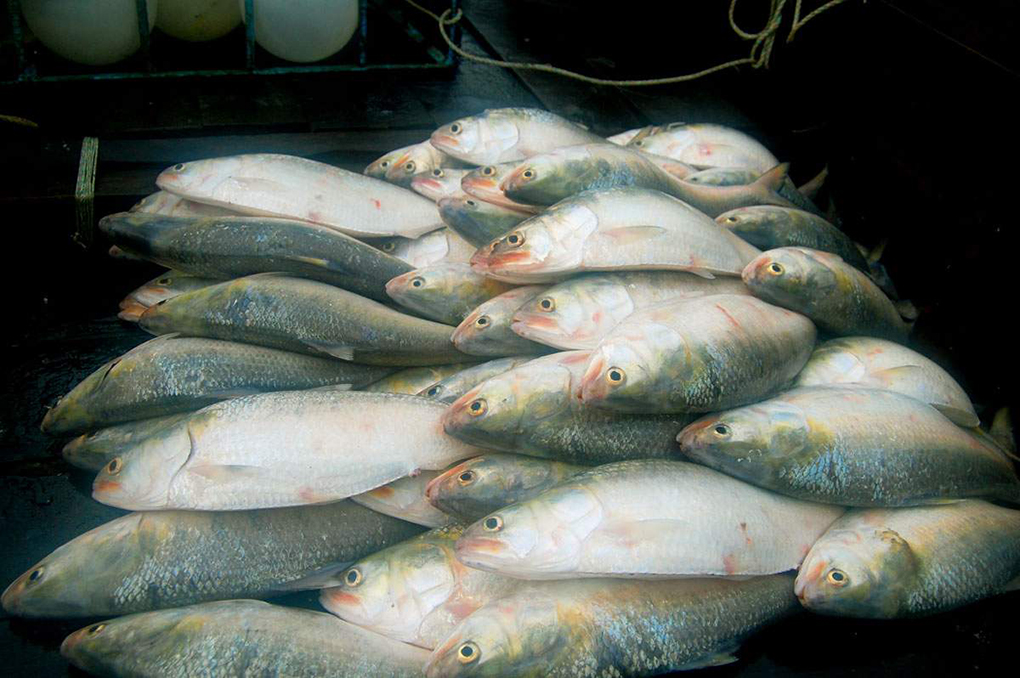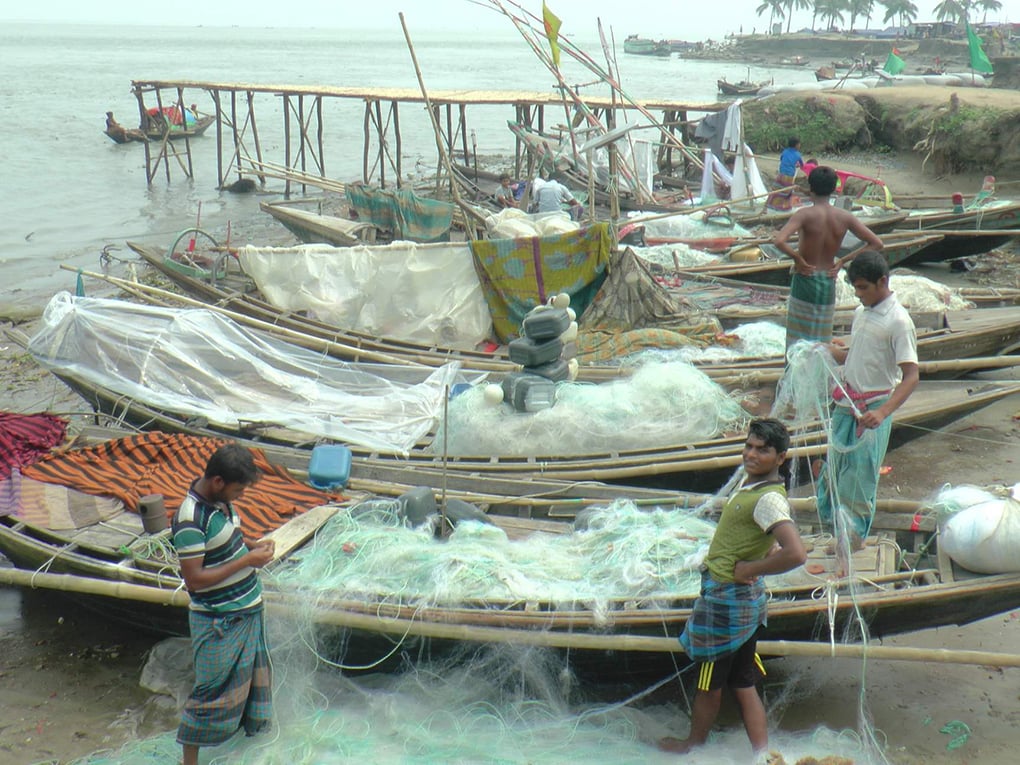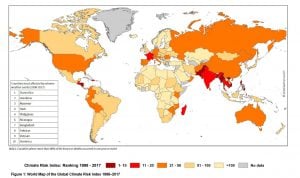Gone are those days when Sharmin Rahman used to worry about getting Hilsa to treat her guests. She now finds the national fish of Bangladesh almost round the year.
“Just a few years ago, I had often to buy other fish as there was hardly any Hilsa available in the market. But now I get the fish almost every time,” said the homemaker from Mirpur in Dhaka.
The favourite fish of Bengalis, the Hilsa is an integral part of the Bangladesh’s culture and heritage. Be it fried or cooked with mustard, Hilsa is a must in many celebrations including Pahela Baishakh, the first day of Bengali New Year.
Thanks to conservation efforts taken by the government in the last several years, the production of Hilsa has increased manifold. The government now puts more focus on Hilsa research and improving the livelihood of the fishermen. It is now framing a policy to provide the fishermen with life insurance, micro-credit and compensation.
Narayon Chandra Chanda, minister of ministry of fisheries and livestock, told thethirdpole.net, “We are now focusing more on how we can improve our conservation initiative – which method will be more sustainable and how we can maximise benefits.”
He also said the government is in regular contact with neighbouring India over the Hilsa conservation issue. “In July we had a meeting with the West Bengal Fisheries Department and we agreed that we will do some research jointly.”
But the story was rather a sad one two decades ago.
The availability of Hilsa in the country fell drastically in the early 1990s due to the impact of climate change, overfishing of brood Hilsa and reduction in water flow in the once-mighty rivers of the Bengal delta.

But the government’s interventions, including imposing a ban on fishing jatka (Hilsa less than 10 inches long) and mother Hilsa for eight months, and declaring five coastal sites as Hilsa sanctuaries have yielded positive results.
More than half a million coastal fishers directly depend on the Hilsa for their livelihood and nearly three million people of Bangladesh are involved in its trading, processing, transportation and marketing.
To help enforce the ban, the government provides compensation to the fishing communities under a social safety net programme.
Basir Majhi, a fisherman in Tulatuli Ghat in Bhola, one of the largest Hilsa yielding spots in Bangladesh, said, “The ban on fishing Hilsa for 28 days increases Hilsa production but the government must increase the monitoring mechanism to stop catching jatka in order to increase the production further.”
He also said the fishers would not catch jatka if they were compensated “properly”.
A successful initiative
Hilsa production in Bangladesh dropped to 199,000 tonnes in the 2002-03 season, creating a nationwide crisis.
Amid fears of a depletion of Hilsa stock in the near future, the Bangladesh government took up a project in 2004 to conserve jatka. Initially, raising awareness and dissuading fishers from catching brood Hilsa was the target.
To bolster its efforts, it also declared five coastal sites as Hilsa sanctuaries and slapped a ban on fishing jatka and mother Hilsa for eight months between November and June from the 2007-08 season.
Four such zones are: a 100-km stretch of the Meghna from Shatnol in Chandpur to Char Alexander in Laximpur, a 90-km stretch of the Shahbazpur tributary of the Meghna from Madanpur/Char Ilisha to Char Piyal in Bhola, a 100-km stretch of the Tetulia from Bhola’s Bheduria to Patuakhali’s Char Rustam, and a 20-km stretch of the lower Padma in Naria-Bhedorganj of Shariatpur. Apart from the eight-month-long ban on catching hilsa and jatka, all kinds of fishing are prohibited in these zones between March and April.
The other nursery ground is a 40-km stretch of the Andharmanik in Patuakhali’s Kalapara. All sort of fishing are banned here between November and January.
Every year, Bangladesh also observes jatka conservation week across the country aiming to mobilise people to conserve the Hilsa fry to boost production.
It also banned gill nets – which have very small holes – to prevent the catching of jatka.

Following Bangladesh’s example, the government of India also took the same initiative a couple of years ago to increase the production of Hilsa, a popular fish among the people of West Bengal, Odisha, Tripura, Assam and some other states of the country.
Good but could be better
Although the Bangladesh government’s initiatives in conserving Hilsa are praiseworthy, further success can be achieved if proper compensation for fishers is ensured.
The government has registered about half a million fishers who are affected by the eight-month-long ban on Hilsa fishing. But only 224,000 of them receive compensation. What they get is 40 kg of rice a month, which is not enough for most families.
Fisherman Ershad Majhi of Tulatuli Ghat in Bhola alleged that they were not even getting this rice. Even that “negligible” amount of rice would have made “some sense” if they got it in time, he added.
Nur Islam, president of Khudra Matsajibi Samiti, a platform of fisherfolk in Bhola, said a family of six members needs at least three kilogrammes of rice a day.
“Therefore, a fisher family should get around 90 kg rice and at least Tk 1,000 (USD 12) in cash every month to meet their expenses,” he said. “If the Hilsa fishers are not compensated properly, they will go for catching jatka.”
Masud Ara Momi, Senior Assistant Director of Department of Fisheries, said that in 37 districts of Bangladesh, the department has started awareness raising programmes to make fishers aware of the need to preserve jatka. The programme started on November 1 and will go on till June 30 next year.
The department will launch a combined operation in 10 coastal districts to destroy nets fixed along those rivers where there is a high concentration of Hilsa, she said.
Talking about the plan for insurance, micro credit and incentives for fishers, Momi added, “The draft is almost finalised, keeping a provision that if any fisher dies during fishing, family members of the deceased will get Tk 1 lakh (USD 1,200) as compensation.”
Mohammad Samsul Alam, professor in the Department of Fisheries Biology and Genetics at Bangladesh Agricultural University, said, “It is true that we are getting huge number of Hilsa but at the same time we have to keep in mind that fishing intensity has also increased over time. Fishing technology has also developed.”
Fishing in the sea is increasing while fishing in river area is decreasing, he added. The Hilsa is a sea fish that travels up rivers to spawn.
Alam said, “Now, it is time to assess the effectiveness of the initiatives to preserve sanctuaries, and put a ban on fishing.” Genome sequencing of Hilsa will open a new door for Hilsa production in Bangladesh, he added.
The government is in the process of setting up a Hilsa Conservation Trust Fund (HCTF) for better conservation, introducing alternative livelihoods to the coastal fishers. Officials of fisheries department said this trust fund would help secure alternative livelihoods for about 2.5 million fishers.
Bushra Nishat, a transboundary water expert, said, “Now it is badly needed for both Bangladesh and India to do the stock assessment of Hilsa.” She said in Bangladesh the ban on fishing is strictly enforced but in India it is not enforced. “India can learn from us about the enforcement method and technique. Bangladesh can learn how the fishers can lead a good life.”
Ecosystems for Life, a Bangladesh-India transboundary project by the International Union for Conservation of Nature (IUCN), had catalysed the regulations and agreements for sustainable Hilsa fishery in both countries. Since the conclusion of that project, IUCN has continued to work on associated issues in the same region in partnership with The Asia Foundation, as part of the South Asia Water Governance Programme of the Department for International Development, Government of UK.
![<p>A traditional Hilsa fishing boat is on its way to the harbour after a day’s catch in Bhola [image by: Mohammad Al Masum Molla]</p>](https://www.thethirdpole.net/content/uploads/2018/11/Bangladesh_Hilsa_Story_26Nov2018_Pic2-300x225.jpg)



![Solar panel lighting being maintained in Tinginaput, India [image by Abbie Trayler-Smith / Panos Pictures / Department for International Development]](https://www.thethirdpole.net/content/uploads/2016/11/solar-India-DfID-300x200.jpg)
![From left to right: the Norwegian Ambassador to India Nils Ragnar Kamsvåg, the Secretary of the Indian Ministry of Earth Sciences M. Rajeevan, the Director of NCPOR M. Ravichandran,the Director of CSIR’s National Institute of Oceanography Sunil Singh, the research director of the Norwegian Polar Institute, Nalân Koç, and Special Advisor to the Research Council of Norway Jon Børre Ørbæk [image courtesy: Norwegian Embassy in India]](https://www.thethirdpole.net/content/uploads/2018/12/DSC_3311-300x200.jpg)